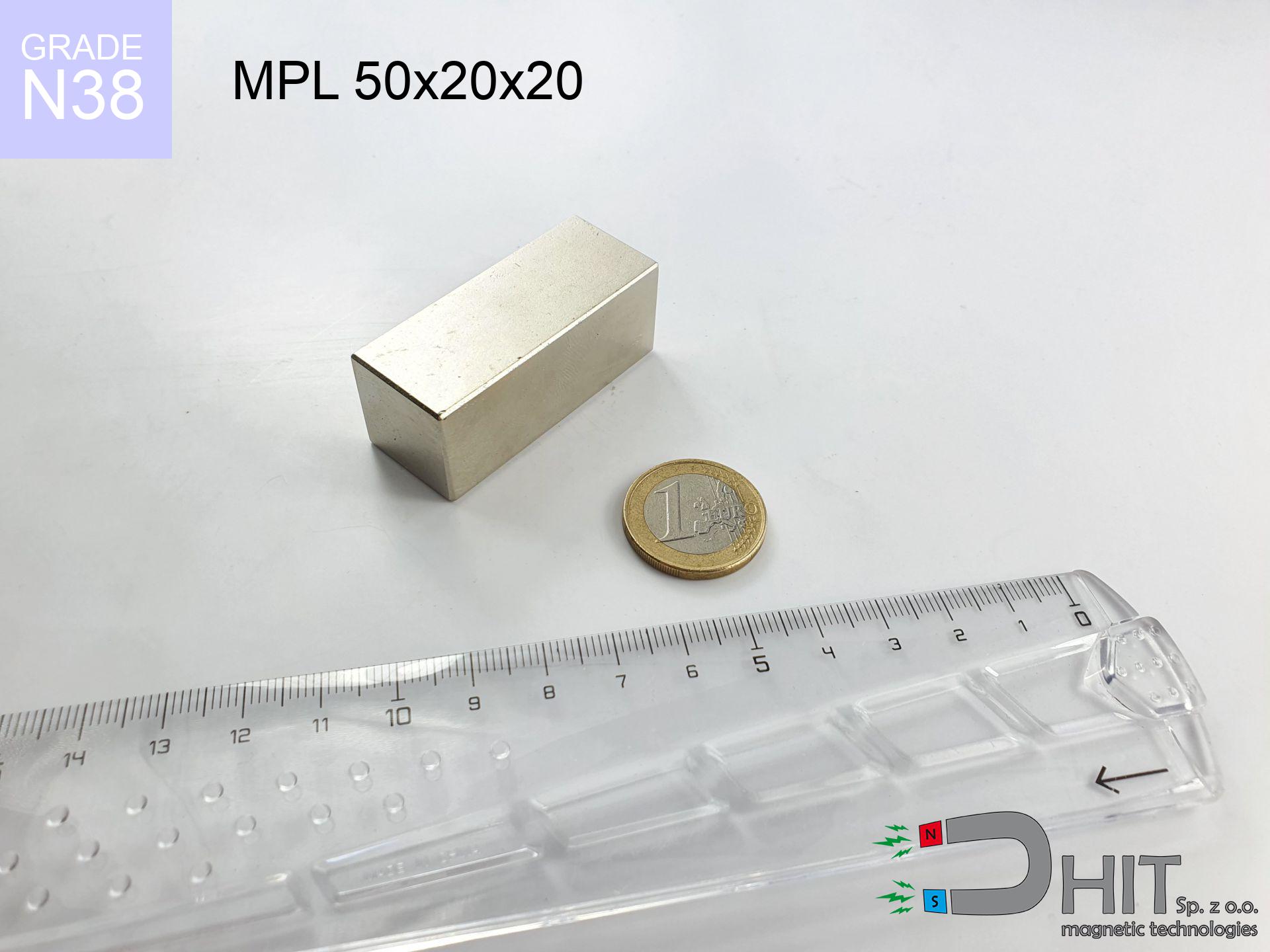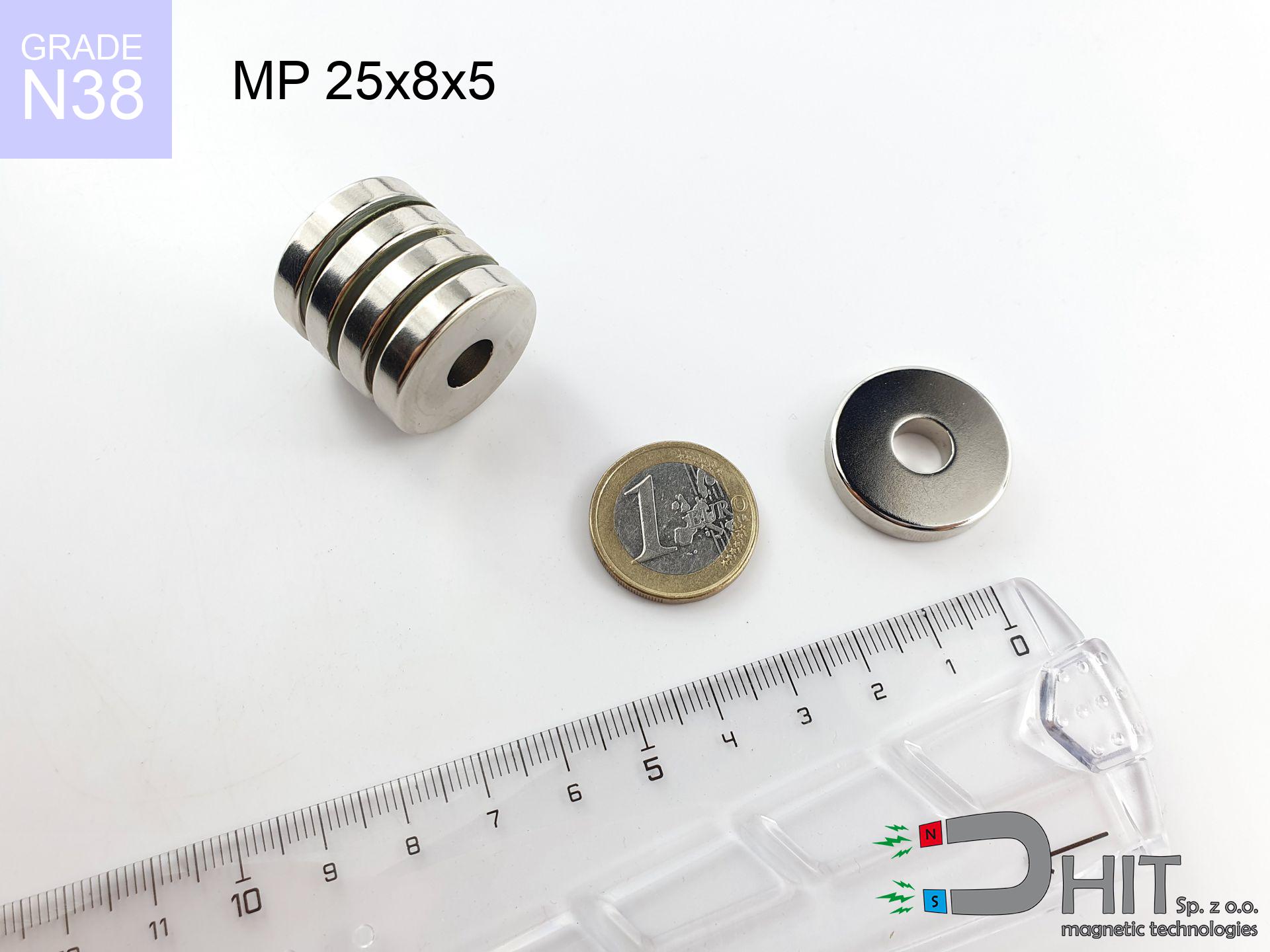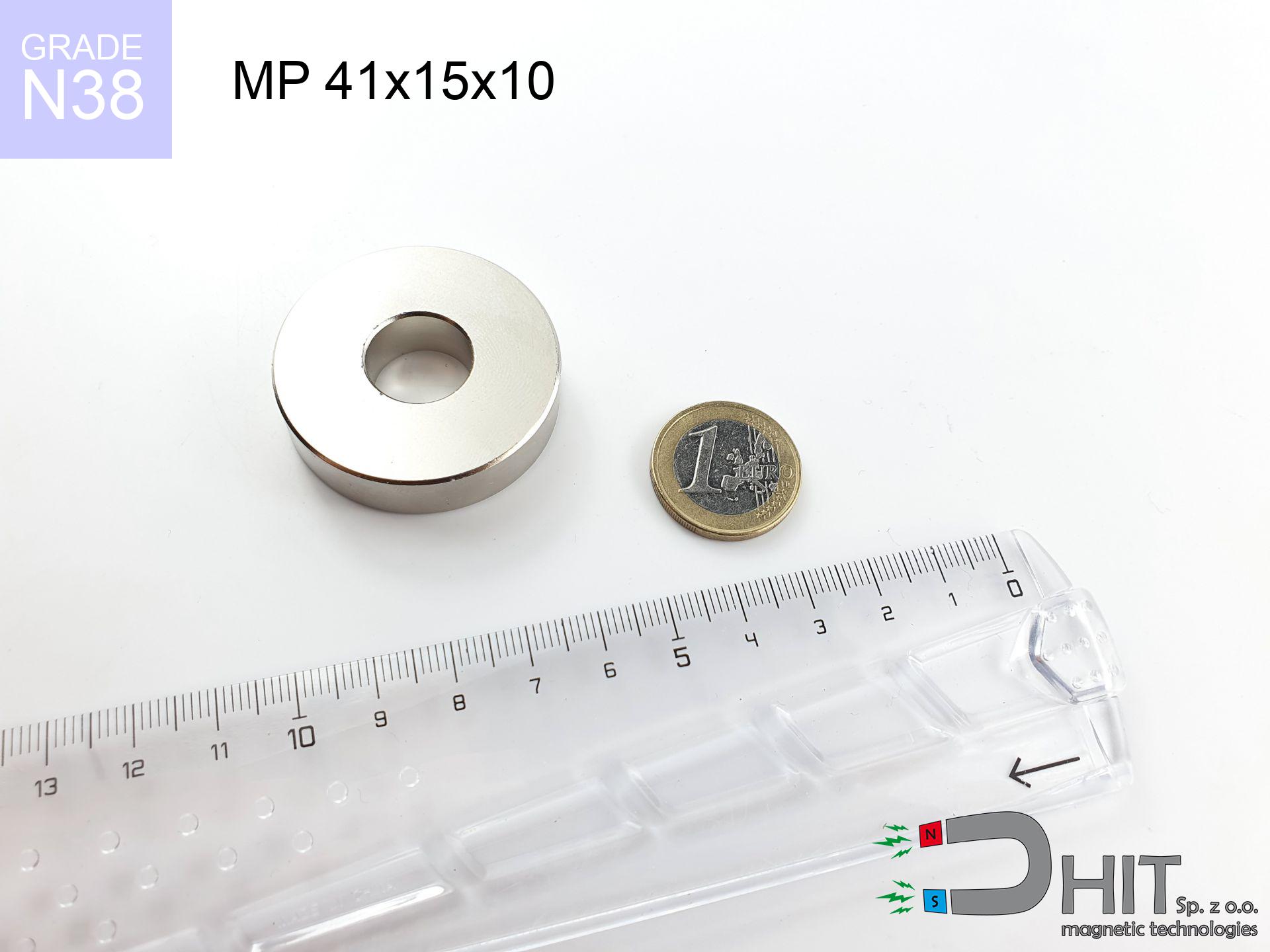UMGW 20x15x7 [M4] GW / N38 - magnetic holder internal thread
magnetic holder internal thread
Catalog no 180316
GTIN/EAN: 5906301813729
Diameter Ø
20 mm [±1 mm]
Height
15 mm [±1 mm]
Height
7 mm [±1 mm]
Weight
15.5 g
Load capacity
9.00 kg / 88.26 N
6.49 ZŁ with VAT / pcs + price for transport
5.28 ZŁ net + 23% VAT / pcs
bulk discounts:
Need more?
Give us a call
+48 888 99 98 98
otherwise let us know using
form
our website.
Strength along with structure of magnets can be analyzed on our
magnetic mass calculator.
Same-day processing for orders placed before 14:00.
Physical properties - UMGW 20x15x7 [M4] GW / N38 - magnetic holder internal thread
Specification / characteristics - UMGW 20x15x7 [M4] GW / N38 - magnetic holder internal thread
| properties | values |
|---|---|
| Cat. no. | 180316 |
| GTIN/EAN | 5906301813729 |
| Production/Distribution | Dhit sp. z o.o. |
| Country of origin | Poland / China / Germany |
| Customs code | 85059029 |
| Diameter Ø | 20 mm [±1 mm] |
| Height | 15 mm [±1 mm] |
| Height | 7 mm [±1 mm] |
| Weight | 15.5 g |
| Load capacity ~ ? | 9.00 kg / 88.26 N |
| Manufacturing Tolerance | ±1 mm |
Magnetic properties of material N38
| properties | values | units |
|---|---|---|
| remenance Br [min. - max.] ? | 12.2-12.6 | kGs |
| remenance Br [min. - max.] ? | 1220-1260 | mT |
| coercivity bHc ? | 10.8-11.5 | kOe |
| coercivity bHc ? | 860-915 | kA/m |
| actual internal force iHc | ≥ 12 | kOe |
| actual internal force iHc | ≥ 955 | kA/m |
| energy density [min. - max.] ? | 36-38 | BH max MGOe |
| energy density [min. - max.] ? | 287-303 | BH max KJ/m |
| max. temperature ? | ≤ 80 | °C |
Physical properties of sintered neodymium magnets Nd2Fe14B at 20°C
| properties | values | units |
|---|---|---|
| Vickers hardness | ≥550 | Hv |
| Density | ≥7.4 | g/cm3 |
| Curie Temperature TC | 312 - 380 | °C |
| Curie Temperature TF | 593 - 716 | °F |
| Specific resistance | 150 | μΩ⋅cm |
| Bending strength | 250 | MPa |
| Compressive strength | 1000~1100 | MPa |
| Thermal expansion parallel (∥) to orientation (M) | (3-4) x 10-6 | °C-1 |
| Thermal expansion perpendicular (⊥) to orientation (M) | -(1-3) x 10-6 | °C-1 |
| Young's modulus | 1.7 x 104 | kg/mm² |
Elemental analysis
| iron (Fe) | 64% – 68% |
| neodymium (Nd) | 29% – 32% |
| boron (B) | 1.1% – 1.2% |
| dysprosium (Dy) | 0.5% – 2.0% |
| coating (Ni-Cu-Ni) | < 0.05% |
Ecology and recycling (GPSR)
| recyclability (EoL) | 100% |
| recycled raw materials | ~10% (pre-cons) |
| carbon footprint | low / zredukowany |
| waste code (EWC) | 16 02 16 |
View also products
Pros and cons of Nd2Fe14B magnets.
Pros
- They virtually do not lose power, because even after ten years the decline in efficiency is only ~1% (based on calculations),
- Magnets effectively protect themselves against loss of magnetization caused by ambient magnetic noise,
- In other words, due to the reflective layer of gold, the element gains visual value,
- Neodymium magnets achieve maximum magnetic induction on a small area, which increases force concentration,
- Due to their durability and thermal resistance, neodymium magnets can operate (depending on the shape) even at high temperatures reaching 230°C or more...
- Possibility of precise creating as well as optimizing to precise requirements,
- Wide application in modern technologies – they find application in HDD drives, motor assemblies, medical devices, as well as technologically advanced constructions.
- Compactness – despite small sizes they offer powerful magnetic field, making them ideal for precision applications
Limitations
- Brittleness is one of their disadvantages. Upon strong impact they can fracture. We recommend keeping them in a strong case, which not only protects them against impacts but also raises their durability
- We warn that neodymium magnets can lose their power at high temperatures. To prevent this, we suggest our specialized [AH] magnets, which work effectively even at 230°C.
- Due to the susceptibility of magnets to corrosion in a humid environment, we suggest using waterproof magnets made of rubber, plastic or other material stable to moisture, when using outdoors
- We suggest cover - magnetic mount, due to difficulties in producing nuts inside the magnet and complicated forms.
- Potential hazard resulting from small fragments of magnets can be dangerous, in case of ingestion, which becomes key in the aspect of protecting the youngest. Furthermore, tiny parts of these products can complicate diagnosis medical in case of swallowing.
- Higher cost of purchase is one of the disadvantages compared to ceramic magnets, especially in budget applications
Pull force analysis
Maximum magnetic pulling force – what it depends on?
- with the contact of a yoke made of special test steel, ensuring maximum field concentration
- possessing a massiveness of min. 10 mm to avoid saturation
- characterized by lack of roughness
- without any insulating layer between the magnet and steel
- during detachment in a direction perpendicular to the mounting surface
- at ambient temperature approx. 20 degrees Celsius
Impact of factors on magnetic holding capacity in practice
- Clearance – the presence of foreign body (paint, dirt, gap) interrupts the magnetic circuit, which reduces capacity steeply (even by 50% at 0.5 mm).
- Force direction – catalog parameter refers to detachment vertically. When applying parallel force, the magnet exhibits significantly lower power (often approx. 20-30% of maximum force).
- Element thickness – to utilize 100% power, the steel must be sufficiently thick. Paper-thin metal limits the attraction force (the magnet "punches through" it).
- Chemical composition of the base – mild steel attracts best. Alloy admixtures reduce magnetic permeability and lifting capacity.
- Surface finish – ideal contact is possible only on polished steel. Rough texture reduce the real contact area, reducing force.
- Heat – neodymium magnets have a negative temperature coefficient. At higher temperatures they lose power, and at low temperatures they can be stronger (up to a certain limit).
Lifting capacity testing was performed on plates with a smooth surface of optimal thickness, under a perpendicular pulling force, whereas under shearing force the holding force is lower. Moreover, even a minimal clearance between the magnet’s surface and the plate lowers the load capacity.
Precautions when working with NdFeB magnets
Caution required
Use magnets with awareness. Their huge power can surprise even professionals. Stay alert and respect their power.
Crushing risk
Watch your fingers. Two large magnets will join instantly with a force of massive weight, destroying anything in their path. Exercise extreme caution!
Heat sensitivity
Monitor thermal conditions. Exposing the magnet above 80 degrees Celsius will ruin its magnetic structure and strength.
Magnets are brittle
Neodymium magnets are ceramic materials, which means they are prone to chipping. Impact of two magnets will cause them shattering into shards.
Keep away from electronics
Navigation devices and smartphones are highly susceptible to magnetism. Close proximity with a strong magnet can ruin the internal compass in your phone.
Swallowing risk
Always store magnets away from children. Ingestion danger is high, and the effects of magnets clamping inside the body are fatal.
Pacemakers
Warning for patients: Powerful magnets disrupt medical devices. Maintain at least 30 cm distance or ask another person to handle the magnets.
Sensitization to coating
Warning for allergy sufferers: The Ni-Cu-Ni coating consists of nickel. If an allergic reaction happens, immediately stop working with magnets and wear gloves.
Machining danger
Fire warning: Rare earth powder is explosive. Avoid machining magnets in home conditions as this risks ignition.
Electronic hazard
Very strong magnetic fields can erase data on credit cards, hard drives, and storage devices. Keep a distance of at least 10 cm.

![Magnet for screw UMGW 20x15x7 [M4] GW / N38 Magnet for screw UMGW 20x15x7 [M4] GW / N38](https://cdn3.dhit.pl/graphics/banners/magnet.webp)
![UMGW 20x15x7 [M4] GW / N38 - magnetic holder internal thread](https://cdn3.dhit.pl/graphics/products/um-20x15x7-m4-gw-big.jpg)
![UMGW 20x15x7 [M4] GW / N38 - magnetic holder internal thread - ujęcie 2](https://cdn3.dhit.pl/graphics/products/umgw-20x15x7-m4-gw-sef.jpg)


![UMGZ 32x18x8 [M6] GZ / N38 - magnetic holder external thread UMGZ 32x18x8 [M6] GZ / N38 - magnetic holder external thread](https://cdn3.dhit.pl/graphics/products/um-32x18x8-m6-gz-jix.jpg)


